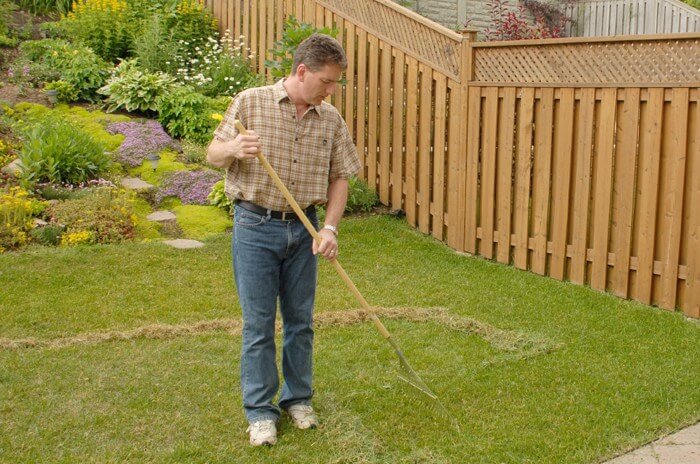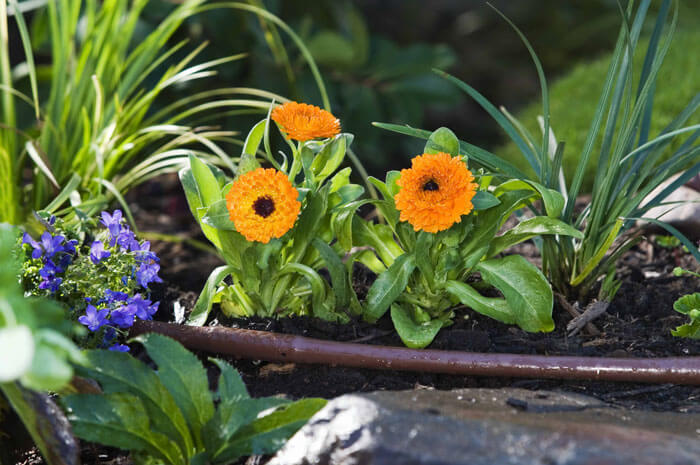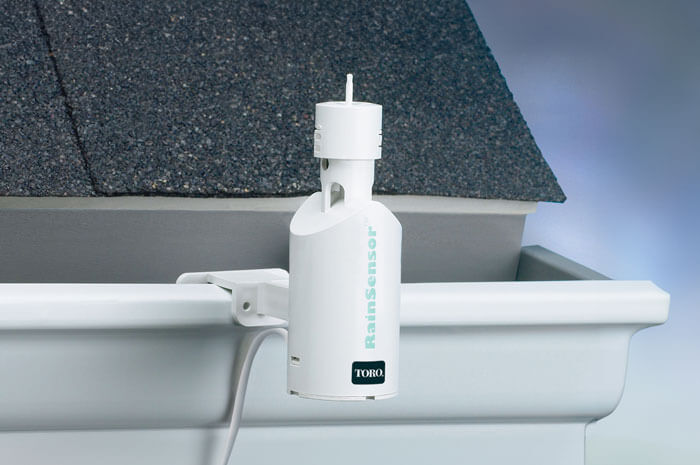
The first step to lawn restoration is to remove any thatch buildup. Thatch is un-decomposed stems and roots that accumulate near the soil surface. Dig up a small, triangular-shaped plug of turf several inches deep. If the spongy layer above the soil is more than ¾- to 1-inch thick when you compress it, it is time to have your lawn dethatched. The best time to dethatch is when your lawn is thriving in the spring or fall. You must expose the soil between the old grass plants and remove weed colonies using a grape (grubbing) hoe or you will have poor results. Read how to fill depressions and level bumps prior to completing this process.
First, set the height adjustment on your mower to cut the grass to about 1-inch high—essentially half its normal mowing height—and mow the entire lawn. Short grass will make dethatching and surface preparation easier. It will also improve seed germination rates because more seed will make contact with the soil and seedlings will have better exposure to the sun.
Make several test passes on an inconspicuous area of your lawn to see how much thatch (and turf) is removed and adjust the blades accordingly. Adjusting the spacing between blades is possible on some machines, but it is difficult and best done by rental-store staff. The blade spacing for Bermudagrass and Zoysiagrass is 1- to 2-inches, while the spacing for Bahiagrass and St. Augustinegrass is 3-inches. Most rental-store owners will know the optimal settings for the grasses grown in your area.
When using a vertical mower to dethatch, make several passes over the lawn in perpendicular directions. It is important to be thorough. Remove the thatch that you pull up after each series of passes, and add it to your compost pile. When you have finished dethatching, re-mow your lawn to a height of 1-inch.
Thick Thatch
On a lawn with very thick thatch (more than 1-½ inches), you may need to partially remove the thatch and allow the lawn to fully recover before the next dethatching session. Removing too much thatch all at once can do more harm than good. The rule of thumb is to remove what you can without tearing up holes of more than a couple of square inches in live turf. In that case, your lawn may not be salvageable and you may need to replant from scratch.
Large Lawns
The easiest way to remove thatch from a lawn that is more than 3,000-square feet is by using a power rake, or vertical mower (a machine with vertical instead of horizontal cutting blades), which should be available at rental stores.
Small Lawns
For smaller lawns or lawns with thin layers of thatch (½- to 1-inch), a manual thatching rake will do a satisfactory job. When using a vertical mower to remove average amounts of thatch. To scarify the soil, set the blades to cut 1/8- to ¼-inch into the soil.



